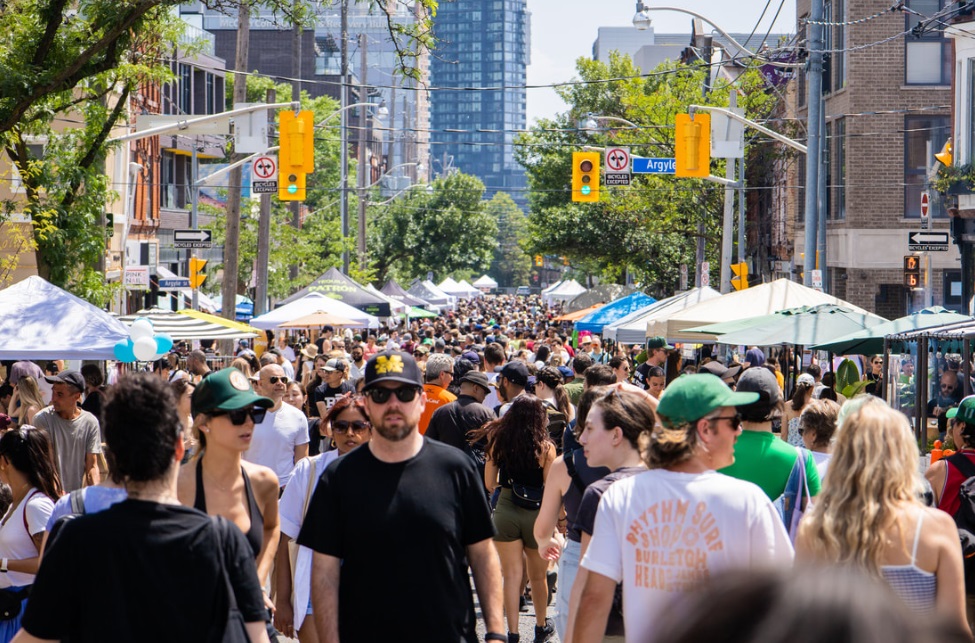Toronto city council to commemorate Canada’s first two Black doctors
Posted May 18, 2022 6:47 pm.
Last Updated May 18, 2022 7:01 pm.
Toronto City Council recently voted to celebrate Canada’s first two Black doctors with a pair of plaques close to where they lived, learned and practiced.
Doctors Alexander Augusta and Anderson Abbott lived in Toronto in the 19th century, each overcoming prejudice and racism to become leaders in Ontario’s Black community.
“Our mission as a charity is to share these stories, to tell these stories, to tell the important stories that people need to know, because they haven’t really been shared widely in the past,” said Chris Bateman, plaques program manager at Heritage Toronto.
He notes that Abbott and Augusta have different but legitimate claims to the title of first Black doctor in Canada.
“Dr. Augusta was born in America and came to Canada to study medicine because he wasn’t able to study medicine in the United States, and actually worked in the city for a time as a pharmacist on Yonge Street,” Bateman explained. “He was an American. At the outbreak of the Civil War in the 1860s he decided he wanted to enlist in the Union Army.”
Dr. Nav Persaud, a staff physician at St. Michael’s Hospital, was part of the team that brought Augusta’s story forward to Heritage Toronto.
“The accounts that we have of him as a student indicate he was exemplary,” Persaud said.
“There were accounts of Augusta from some of his professors at the time, and others he had sought reference letters from,” he explained. “We can see the endorsements of Augusta at the time and it seems like there were a number of individuals in Toronto, or Upper Canada at the time, who thought very highly of Augusta and his abilities as a physician.”
Abbott, meanwhile, was born in Toronto in 1837. His parents came to the city three years earlier, from Alabama after their store was ransacked. Abbott went to University College and then to medical school. He apprenticed under Augusta and was licensed in 1862, making him the first Canadian-born Black doctor.
“He has a very similar trajectory to Dr. Augusta, studied in Toronto and also went to fight in the Civil War,” noted Bateman. “And they were actually friends as well. They knew each other quite well. Dr. Abbott actually trained under Dr. Augusta here in Toronto.”
Research submitted with the plaques motion indicates that Abbott and Augusta were two of eight Black doctors who served in the Union Army during the Civil War. After the war, they were invited to the White House to meet U.S. President Abraham Lincoln.
When Abbott returned to Canada after the war, he married and moved to Chatham, where he became the area’s first Black coroner. He also became a Black community advocate – fighting against racially segregated schools in Canada. He also was the president of the local debating and medical societies. In 1894 he returned to the U.S., becoming the Surgeon-in-Chief at Chicago’s Provident Hospital, which had been recently established as the first Black-owned hospital in the country.
Eventually, he returned to Toronto, where he continued to practice medicine, while also writing for local publications on a variety of subjects. He died in 1913.
Plaques to be installed by end of 2022
The plaque honouring Abbott is expected to go near College Street and Spadina Avenue, close to where he once lived and the University of Toronto. The other plaque, for Augusta, is expected to be installed at the northwest corner of College Street and University Avenue, near Queen’s Park.
University-Rosedale city councillor Mike Layton brought the motion to council. He says he’s happy to see the speed with which the project has been able to move forward.
“This is a good example of people bringing forward a good idea,” he said. “If it speaks to anything it’s that the stars can align and we can take action on ideas that come from community.”
Bateman says the plaques commemorating the doctors should be installed by the end of 2022. Members of the public can submit applications for commemorative plaques to Heritage Toronto.
“We receive applications on almost every subject,” Bateman said. “Toronto’s history is incredibly interesting …I hope people enjoy reading them.”








